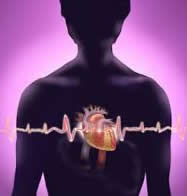Difference between Inotropic, Chronotropic and Dromotropic
Key Difference: Inotropic, Chronotropic, and Dromotropic are different types of cardiac drugs. This classification is based on the way these drugs are used for the treatment of a particular condition. Inotropic drugs affect the force of cardiac contraction. Chronotropic drugs affect the heart rate. Dromotropic drugs affect conduction velocity through the conducting tissues of the heart.
 Inotropic, Chronotropic and Dromotropic are different types of cardiac drugs. This classification is based on the way these drugs are used for the treatment of a particular condition. Inotropic drugs affect the force of cardiac contraction. Chronotropic drugs affect the heart rate. Dromotropic drugs affect conduction velocity through the conducting tissues of the heart.
Inotropic, Chronotropic and Dromotropic are different types of cardiac drugs. This classification is based on the way these drugs are used for the treatment of a particular condition. Inotropic drugs affect the force of cardiac contraction. Chronotropic drugs affect the heart rate. Dromotropic drugs affect conduction velocity through the conducting tissues of the heart.
See: Difference between heart attack and heart failure
Inotropic agents basically affect the contraction of the heart muscles. There are two types of inotropic agents– Positive inotropic agents increase the force of myocardial contraction. On the other hand, negative inotropic agents decrease the force of myocardial contraction. Also see: Heart attack Vs. Cardiac arrest.
Positive inotropic agents include dopamine, isoprenaline, etc. Negative inotropic agents include beta blockers, quinidine, flecainide, etc. Positive inotropes are also known as sympathomimetic drugs. Inotropes are used to treat impaired cardiac contractility. Also see: Heart attack Vs. Stroke
Chronotropic is another type of cardiac drug which affects heart rate. They are further classified into positive and negative chronotropic agents. Positive chronotropic increases the heart rate by the acceleration of the rate of impulse formation in the SA node. Negative chronotropic drugs are just opposites of positive chronotropic agents as they slow down the heart rate by decreasing impulse formation. Also see: Difference between Heart Attack and Panic Attack
Dromotropic drugs affect the conduction of electrical impulses through the myocardium. Positive dromotropic drugs increase this rate of conduction, whereas negative dromotropic drugs decrease this rate of electrical conduction.
These cardiovascular drugs differ from each other primarily on the basis of the aspects related to cardiac performance which they influence or effect.
Also see: Difference between Anxiety and Heart Attack
Comparison between Inotropic, Chronotropic, and Dromotropic:
|
|
Inotropic |
Chronotropic |
Dromotropic |
|
Definition |
Affects the force of cardiac contraction |
Affects the heart rate |
Affects conduction velocity through the conducting tissues of the heart |
|
Classification |
Positive Inotropic – strengthens the force of cardiac contraction
Negative Inotropic – weakens the force of cardiac contraction |
Positive chronotropic – accelerates the heart rate
Negative chronotropic – slows down the heart rate |
Positive dromotropic – speeds up conduction
Negative dromotropic - slow down conduction |
|
Examples |
Positive Inotropic – dopamine, adrenaline, etc.
Negative Inotropic – labetalol and propanolol |
Positive chronotropic – Adernaline
Negative chronotropic – digoxin |
Positive dromotropic – phenytoin
Negative dromotropic - verapamil |
|
Origin of word |
From Greek in-, meaning fiber or sinew) |
From chrono-, meaning time, and tropos, "a turn" |
From the Greek word "dromos", meaning running, a course, a race |
Image Courtesy: khanacademy.org, dailymail.co.uk









Comments
simple & clear!!!
Mary Ria
Sat, 03/07/2015 - 22:35
Pages
Add new comment